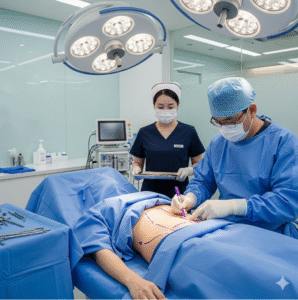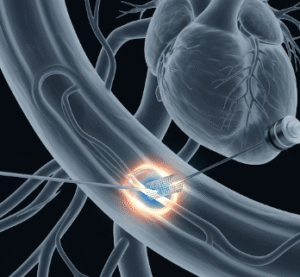Overview
Osteoporosis is a common bone disease characterized by decreased bone mass and deterioration of bone tissue, leading to fragile bones and an increased risk of fractures. It primarily affects older adults, especially postmenopausal women, but can also impact men. In Korea, osteoporosis is a significant public health concern, with comprehensive screening, prevention, and treatment programs widely available to reduce fracture risk and improve bone health.
What is Osteoporosis?
Osteoporosis occurs when the creation of new bone cannot keep up with the removal of old bone, resulting in porous, weak bones. This condition increases the likelihood of fractures, particularly in the hip, spine, and wrist. Osteoporosis is often called a “silent disease” because it typically progresses without symptoms until a fracture occurs.
Symptoms
Osteoporosis itself usually has no symptoms until a fracture happens. Signs that may indicate osteoporosis include:
- Fractures from minor falls or injuries
- Loss of height over time
- A stooped or hunched posture (kyphosis)
- Back pain caused by vertebral fractures
Causes
Causes of osteoporosis include factors that disrupt the balance between bone resorption and formation:
- Aging and natural bone loss after peak bone mass is reached
- Hormonal changes, especially decreased estrogen in women after menopause
- Inadequate calcium or vitamin D intake
- Sedentary lifestyle and lack of weight-bearing exercise
- Certain medications, such as corticosteroids
- Medical conditions affecting bone metabolism
Risk Factors
Risk factors for osteoporosis include:
- Female gender and older age
- Family history of osteoporosis or fractures
- Low body weight or small frame size
- Smoking and excessive alcohol consumption
- Poor nutrition
- Sedentary lifestyle
- Certain chronic diseases and medications
Complications
Osteoporosis can lead to serious complications such as:
- Fragility fractures, especially in the hip, spine, and wrist
- Chronic pain and disability from fractures
- Loss of independence due to mobility limitations
- Increased risk of mortality after hip fractures
Prevention
Preventing osteoporosis focuses on maintaining strong bones and reducing fracture risk by:
- Consuming adequate calcium and vitamin D
- Engaging in regular weight-bearing and muscle-strengthening exercises
- Avoiding smoking and limiting alcohol intake
- Early screening and bone density testing for at-risk populations
- Managing underlying health conditions
Treatment Options in Korea
Korean healthcare providers offer a comprehensive approach to osteoporosis management:
- Medications: Bisphosphonates, selective estrogen receptor modulators (SERMs), hormone replacement therapy, and newer agents like denosumab and romosozumab
- Lifestyle interventions: Nutritional counseling and exercise programs tailored to bone health
- Fall prevention programs: To reduce fracture risk in the elderly
- Regular bone density monitoring: Using DEXA scans for diagnosis and treatment efficacy
- Patient education: Promoting adherence to treatments and healthy lifestyle choices
Advanced medical centers in Korea utilize cutting-edge diagnostics and individualized treatment plans to optimize bone health and reduce the burden of osteoporosis-related fractures.













